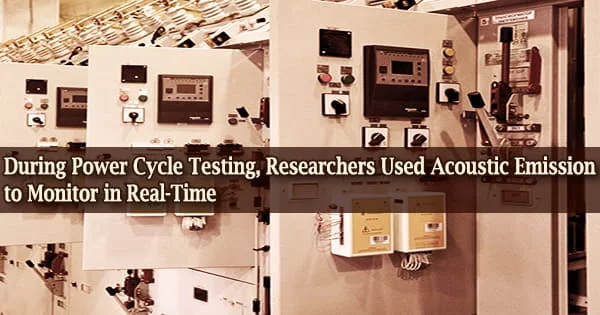Electric power is regulated and modified by power electronics. Computers, power steering systems, solar cells, and a variety of other technologies use them. Silicon carbide semiconductors are being used by researchers to improve power electronics.
Wear-out failures such as cracks, on the other hand, continue to be an issue. Early damage detection in power electronics before complete failure is necessary to aid researchers in improving future device designs.
Researchers from Osaka University recently published a paper in IEEE Transactions on Power Electronics that tracked the progression of cracks in a silicon carbide Schottsky diode during power cycle tests in real-time.
The researchers employed an analysis technique called acoustic emission that has never been used for this purpose before. During the power cycling test, the researchers imitated regularly turning on and off the gadget to track the diode’s degradation over time.
The incremental degradation to the aluminum ribbons affixed to the silicon carbide Schottsky diode corresponds to increasing acoustic emission. The observed acoustic emission signals were linked to specific stages of device deterioration that eventually led to failure, according to the researchers.
Unlike forward voltage plots, acoustic emission plots indicate all three stages of crack development. We detected crack initiation, crack propagation, and device failure, and confirmed our interpretations by microscopic imaging.
Chuantong Chen
“A transducer converts acoustic emission signals during power cycling tests to an electrical output that can be measured,” explains lead author ChanYang Choe. “We observed burst-type waveforms, which are consistent with fatigue cracking in the device.”
Monitoring unusual rises in the forward voltage during power cycle tests is the standard way of determining whether a power device is damaged. The researchers discovered an abrupt spike in forward voltage using the usual method, but only when the device was near full failure.
Acoustic emission counts, on the other hand, were far more sensitive. During power cycling testing, there were evident trends in the acoustic emission counts rather than an all-or-nothing response.
“Unlike forward voltage plots, acoustic emission plots indicate all three stages of crack development,” says senior author Chuantong Chen. “We detected crack initiation, crack propagation, and device failure, and confirmed our interpretations by microscopic imaging.”
There is currently no sensitive early-warning approach for identifying fatigue cracks in silicon carbide Schottsky diodes that lead to full failure. Acoustic emission monitoring is one such method, as described here.
This advancement will aid researchers in determining why silicon carbide devices fail in the future, as well as improving future designs in both common and advanced technology.





